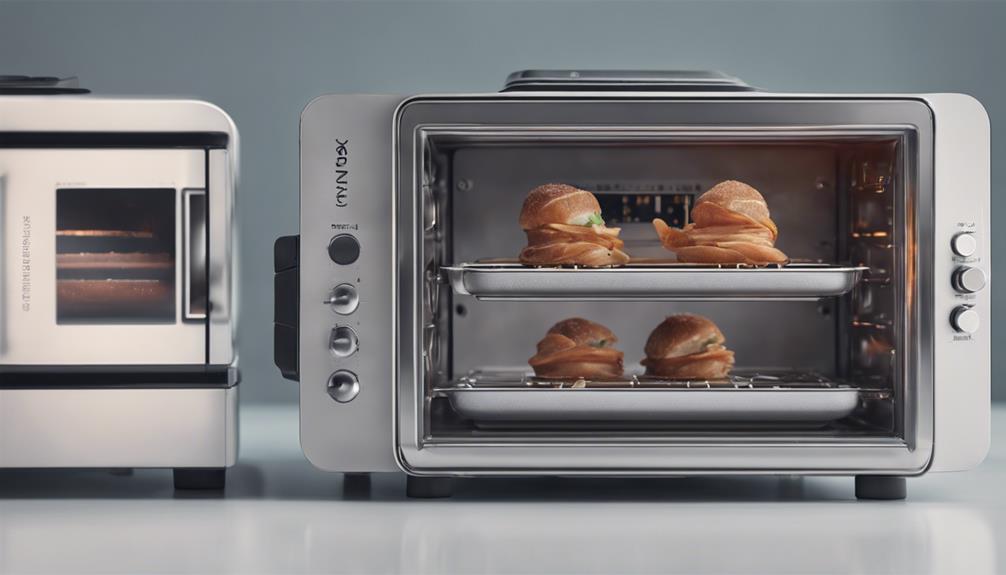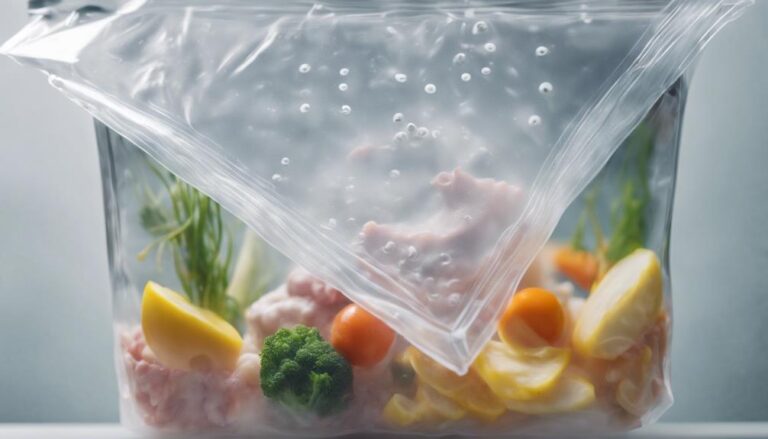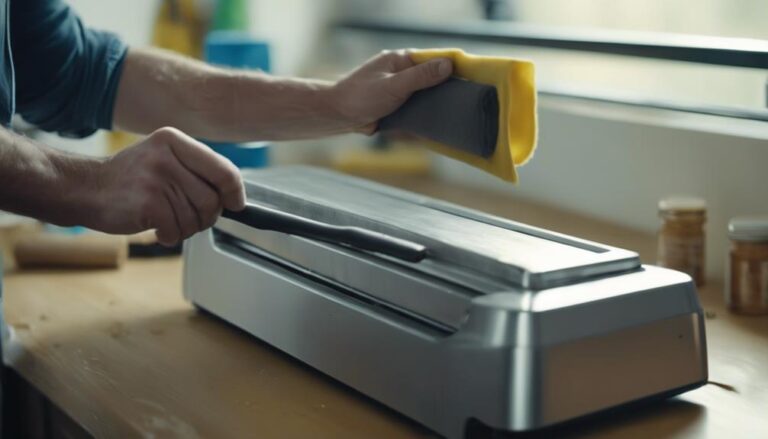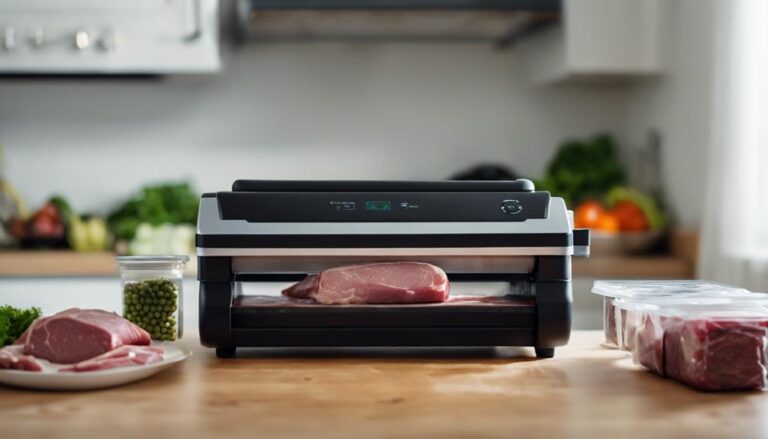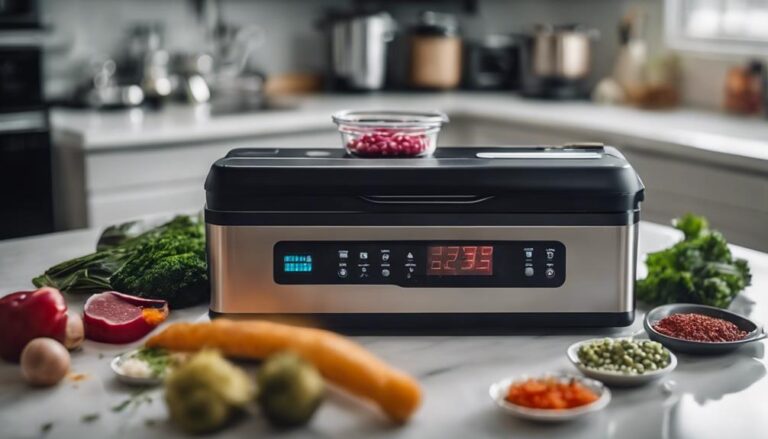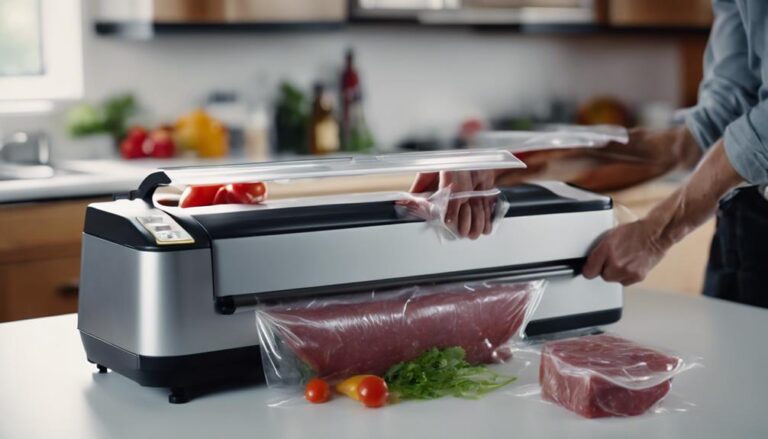Immersion Circulators Vs. Water Ovens: Which Is Right for You?
When choosing between immersion circulators and water ovens, consider your cooking style. Immersion circulators offer precise temperature control and versatility in container sizes. They are budget-friendly and suitable for various dishes. If you want flexibility, adaptability, and cost-effective sous vide cooking, immersion circulators are the way to go. Explore the differences in cooking precision, culinary applications, space usage, budget considerations, and personal preferences to find your perfect match.
What You Will Learn Here
- Immersion circulators offer precise temperature control and consistent cooking outcomes.
- Immersion circulators are versatile in container sizes and cooking techniques.
- Immersion circulators are budget-friendly, ranging from £99.00 to £659.99.
- Consider culinary style: immersion circulators suit various dishes, while water ovens excel for specific recipes.
- Immersion circulators are compact, easy to clean, and portable, ideal for space-conscious users.
Key Differences in Cooking Method
When comparing immersion circulators to water ovens, the key difference in cooking method lies in the way water circulation is handled. Immersion circulators, such as the popular Anova Precision Cooker, excel in circulating water to maintain precise temperatures throughout the cooking process. This circulation guarantees that your food is evenly cooked from edge to edge, resulting in consistently delicious meals.
On the other hand, water ovens like the Sous Vide Supreme lack this essential feature, leading to potential temperature variations within the water bath and unevenly cooked dishes.
For those looking to elevate their home cooking experience, immersion circulators are a fantastic choice due to their superior cooking method. The ability to circulate water efficiently not only ensures perfectly cooked food but also offers the flexibility to use any container size you have on hand. This versatility makes immersion circulators ideal for various cooking needs, whether you're preparing a single steak or a family-sized meal.
In addition, their ease of cleaning and compact storage make them convenient for everyday home use, setting them apart from water ovens with regard to practicality and functionality.
Precision and Control Comparison
When comparing precision and control between immersion circulators and water ovens, temperature accuracy is an important factor to think about. Immersion circulators excel in providing precise temperature control, ensuring consistent cooking results.
Evaluating the timing flexibility of both devices will further highlight the benefits of immersion circulators in achieving best sous vide outcomes.
Temperature Accuracy Comparison
For precise temperature control and accuracy in your cooking, immersion circulators outshine water ovens like Sous Vide Supreme due to their ability to maintain temperatures within a 0.1°C range. Immersion circulators offer unparalleled precision, ensuring your culinary creations turn out perfectly every time. Take a look at the comparison table below to see the difference in temperature accuracy between immersion circulators and water ovens:
| Immersion Circulators | Water Ovens | |
|---|---|---|
| Temperature Range | Within 0.1°C | +/- 1°C |
| Precision | High | Moderate |
| Cooking Outcomes | Consistent | Slightly Variable |
With their precise temperature control, immersion circulators are the top choice for those who value accuracy in their cooking endeavors.
Timing Flexibility Assessment
To further evaluate the comparison between immersion circulators and water ovens, consider the impact of timing flexibility on precision and control in your cooking methods.
Immersion circulators provide precise temperature control to within 0.1°C, ensuring accurate cooking times. This precise control allows for consistent heat distribution, reducing the risk of overcooking or undercooking.
In contrast, water ovens like the Sous Vide Supreme have limited precision, with temperature fluctuations of up to 1-2°C, impacting timing accuracy. The lack of precise control in water ovens may lead to timing issues and less exact cooking results.
The precision offered by immersion circulators enhances timing flexibility, enabling chefs to achieve the desired level of doneness with greater accuracy.
Versatility in Culinary Applications
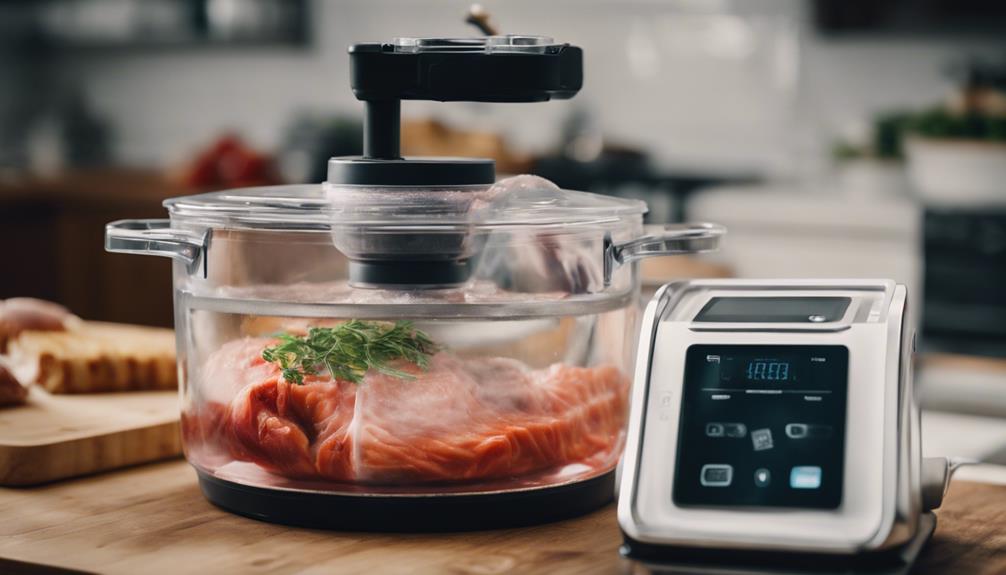
Immersion circulators outshine water ovens in culinary versatility due to their ability to accommodate various container sizes and adapt to different recipes, providing home cooks and professionals with flexible cooking options.
With immersion circulators, you can easily adjust to varying quantities of food, making them ideal for both intimate dinners and larger gatherings. Their precise temperature control guarantees that your dishes turn out perfectly cooked every time, whether you're preparing tender meats through sous vide or experimenting with delicate desserts.
On the other hand, water ovens, limited by their fixed container size and lack of water circulation, are less versatile in culinary applications.
The adaptability of immersion circulators makes them the preferred choice for those seeking to explore a wide range of cooking techniques and recipes. Whether you're a culinary enthusiast looking to impress your guests or a professional chef aiming for consistent results, immersion circulators offer the versatility you need to elevate your culinary creations.
Space and Storage Considerations
When contemplating immersion circulators versus water ovens, space and storage are vital factors to ponder. Immersion circulators offer a compact design that easily fits in small kitchens or storage areas.
They provide space-saving solutions and flexibility in storage options, making them a convenient choice for those with limited space.
Size Limitations
Considering space limitations and storage constraints in your kitchen, the size difference between immersion circulators and water ovens becomes an important factor to evaluate. Immersion circulators are more space-efficient, taking up less counter space and offering convenient storage options compared to water ovens like the Sous Vide Supreme, which are bulkier and less portable. When deciding between the two for your sous vide cooking needs, it's essential to assess the available worktop space and storage possibilities in your kitchen. Below is a comparison table highlighting the size differences between immersion circulators and water ovens:
| Size Comparison | Immersion Circulators | Water Ovens |
|---|---|---|
| Space Efficiency | High | Low |
| Portability | Easy | Less convenient |
| Storage Options | Drawer or cabinet | More space needed |
Storage Options
Given the space limitations in your kitchen, the storage options for immersion circulators and water ovens play an important role in determining which sous vide cooking device best fits your needs.
Immersion circulators are compact and lightweight, ideal for small kitchens or limited cabinet space. You can conveniently store circulators in a drawer or cabinet when not in use, maximizing kitchen storage efficiency.
On the other hand, water ovens like Sous Vide Supreme require more space due to their bulkier design, potentially occupying valuable countertop or storage space. Water ovens may need dedicated counter space or storage area, limiting flexibility in kitchen organization.
If you have limited kitchen storage capacity, immersion circulators offer a space-saving solution that could better suit your needs.
Space-Saving Solutions
Looking to maximize kitchen space and storage efficiency while choosing between immersion circulators and water ovens? Immersion circulators are your space-saving solution. These compact devices are easily stored, making them ideal for kitchens with limited space.
Unlike water ovens like the Sous Vide Supreme, which may take up more counter space due to their bulkier design, immersion circulators offer a sleek and efficient option. Their ability to clip onto various container sizes maximizes countertop efficiency.
When deciding between immersion circulators and water ovens, consider the storage options available to optimize your kitchen space. With immersion circulators, you can enjoy the benefits of Sous Vide cooking without sacrificing valuable space in your kitchen.
Budget-Friendly Options
For a budget-friendly option in sous vide cooking, consider the affordability of immersion circulators over water ovens. If you're looking to save some money while still enjoying the benefits of precise temperature control and delicious meals, immersion circulators might be the perfect choice for you.
Here are some key points to keep in mind when considering budget-friendly options for your sous vide cooking needs:
- Immersion circulators are generally more cost-effective than water ovens, making them a great choice for those on a tighter budget.
- With prices ranging from £99.00 to £659.99, immersion circulators offer a range of options to suit your specific financial needs.
- Budget-conscious consumers often find immersion circulators to be a practical and economical solution for their sous vide cooking adventures.
Choosing Based on Cooking Preferences
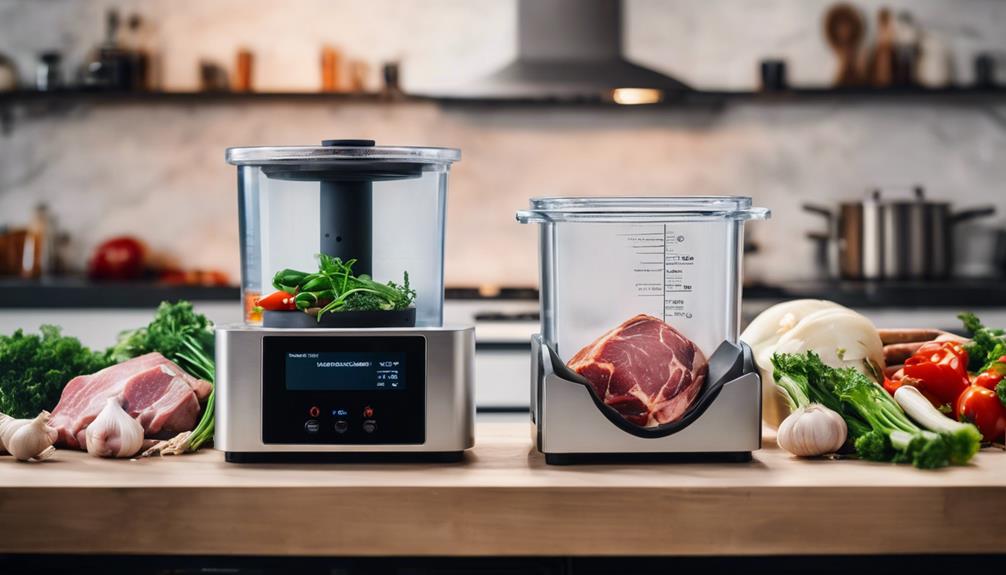
Consider your culinary style and preferred techniques when deciding between immersion circulators and water ovens for your sous vide cooking setup.
If you enjoy experimenting with a wide range of recipes that require precise temperature control, immersion circulators might be the best option for you. Immersion circulators offer versatility and adaptability to different cooking styles, making them suitable for various sous vide dishes.
On the other hand, if your recipes don't require water circulation and you prefer a more straightforward approach to sous vide cooking, water ovens could be a better fit for your cooking preferences. Water ovens provide a consistent temperature environment without the need for water circulation, which can be beneficial for certain types of dishes.
Ultimately, your specific cooking needs and desired level of precision should guide your decision between immersion circulators and water ovens to enhance your sous vide cooking experience.
Frequently Asked Questions
Why Use an Immersion Circulator?
For precision cooking with consistent outcomes, an immersion circulator is your go-to. It saves time, offers versatile applications, and guarantees even cooking. With user-friendly controls, it's perfect for both home cooks and pros.
What Is the Difference Between Sous Vide and Water Bath?
For precise cooking with sous vide, understand the difference between water baths and sous vide. Water baths are static, while immersion circulators offer temperature control and even heating. Embrace this cooking technique for food precision and perfect results.
What Is Sous Vide Best For?
For precision cooking and meat tenderness, sous vide is your go-to method. It excels at flavor infusion, saving you time and effort in the kitchen. Elevate your dishes with consistent results, creating restaurant-quality meals with ease.
How Do I Choose a Sous Vide Cooker?
When choosing a sous vide cooker, consider your needs: budget options, portability features, cooking capacity, and technology advancements. Evaluate what matters most to you and find the best fit that aligns with your preferences.
Conclusion
So, whether you prefer the precision and control of an immersion circulator or the hands-off convenience of a water oven, the choice ultimately comes down to your cooking preferences and budget.
Both options offer unique benefits and can elevate your culinary skills in different ways. Consider your space limitations, desired cooking applications, and financial constraints to determine which device is the right fit for you.
Happy cooking!
